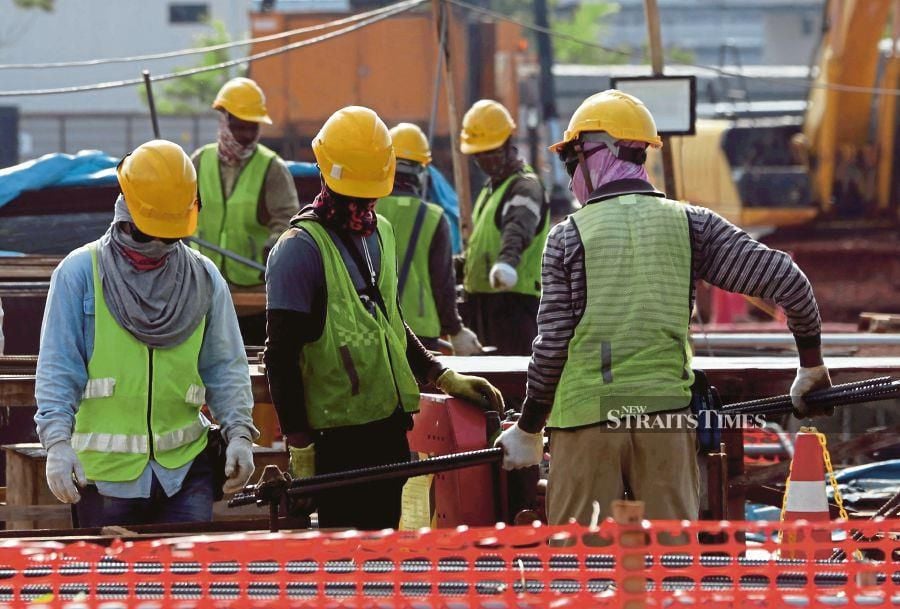LETTERS: TODAY is World OSH Day. World OSH — Occupational Safety and Health - Day is celebrated on April 28 each year to commemorate the Day for the Dead and Injured Workers to honour the memory of victims of occupational accidents and diseases.
Being a member of the international community, Malaysia commemorates World OSH Day and regards it as an integral part of the national strategy on promoting a preventative safety and health culture involving all stakeholders.
The theme for this year's World OSH Day is "A Safe and Healthy Working Environment — A Fundamental Right at Work".
The International Labour Organisation celebrates the World Day for Safety and Health on April 28 to promote prevention of occupational accidents and diseases globally. It is an awareness-raising campaign to focus international attention on emerging trends in the field of occupational safety and health on the magnitude of work-related injuries, diseases and fatalities worldwide.
Occupational Safety and Health (OSH) or safety at the workplace is a matter that must never be taken for granted.
Time and again, it has been proven that failure to adopt and implement safety rules and procedures will be detrimental to those at the workplace.
Although Malaysia's occupational accident rate per 1,000 workers had been reduced from 3.10 in 2014 to 1.43 in 2021 and the occupational fatality rate per 100,000 workers from 4.21 in 2014 to 2.00 in 2021, the remaining challenge would be to build and foster an OSH culture in Malaysia and strive towards an accident-free workplace environment.
The reduction in the accident rate at the workplace is a reflection of the commitment and joint efforts by the Government, employers and employees to reduce workplace accidents.
While we are pleased to note the success of the joint efforts by all parties concerned the biggest challenge that remains is not only to further reduce the accident rate in the days ahead but also to make OSH a culture and a way of life in order to contribute towards an accident-free work environment.
It is the responsibility of employers and managements to ensure that safety is a culture at their organisation and not just a priority.
There is an urgent need to translate OSH knowledge into behaviour and practical application. OSH sloganeering is not the answer. We must avoid a situation where behind all the OSH banners and signages the workplace hazards are not addressed and controlled.
In this connection, innovation and innovative practices play a crucial role in improving the OSH landscape and shaping Occupational Safety and Health Management Systems (OSHMS) for the future.
Establishing a safe and healthy work environment requires fundamental changes in the way work is designed and personnel are deployed, and how the very culture of the organization understands and acts on safety.
These changes require leadership capable of transforming not just a physical environment, but also the beliefs and practices of those who create the risk and those who work with the risk.
Managements who are responsible for the safety and health at the workplace can change the attitude of safety and health of their employees by ensuring an annual budget for safety training and education to help prevent work-related accidents and diseases among the workforce. Accidents do not just happen, they are preventable.
In this time of global competition and sweeping changes, it is not enough for companies to make safety a priority. Priorities change but cultures stand the test of time. Safety must be a culture and a core value at the workplace. And, certainly managing occupational safety and health ensures business competitiveness.
The Global Trend in OSH is towards a more integrated prevention concept. OSH is now regarded as a societal responsibility and countries are required to have a blueprint for building an accident prevention culture with a framework for national and international prevention strategies.
Protecting workers health requires a broader prevention approach which places emphasis on the following:-
1. Reduce workplace accidents and occupational diseases through measures such as law enforcement, risk assessment and OSH Management System.
2. Promoting a prevention culture by raising awareness involving all relevant stakeholders and building partnerships.
3. Mainstreaming occupational safety and health into education and training.
4. Promoting health and safety as an integral part of lifestyle.
Observations and evidence have shown that an increase in productivity and an improvement in workplace environment were the results of good safety and health work practices and the adoption of a work safety culture.
TAN SRI LEE LAM THYE
Chairman
Alliance For A Safe Community
The views expressed in this article are the author's own and do not necessarily reflect those of the New Straits Times





